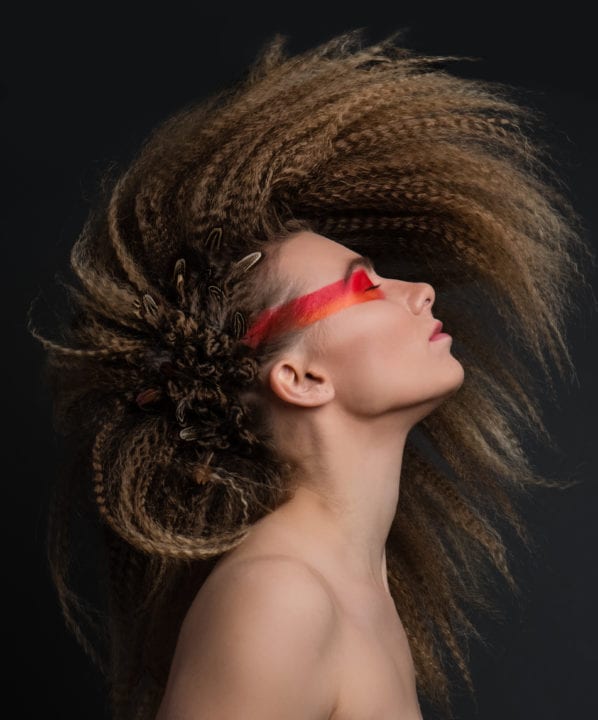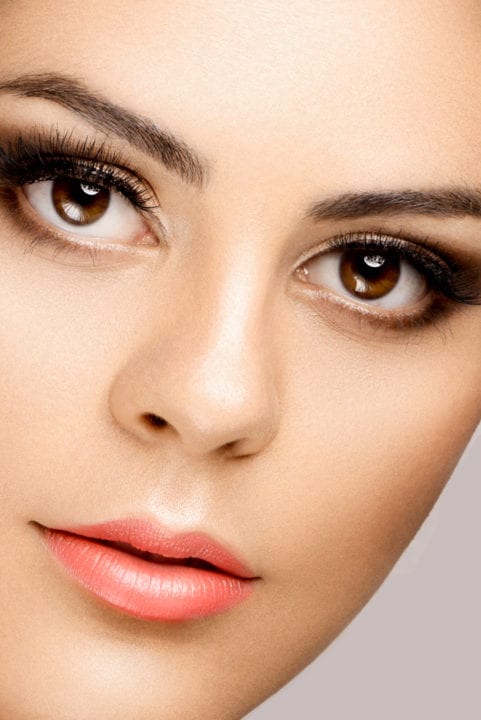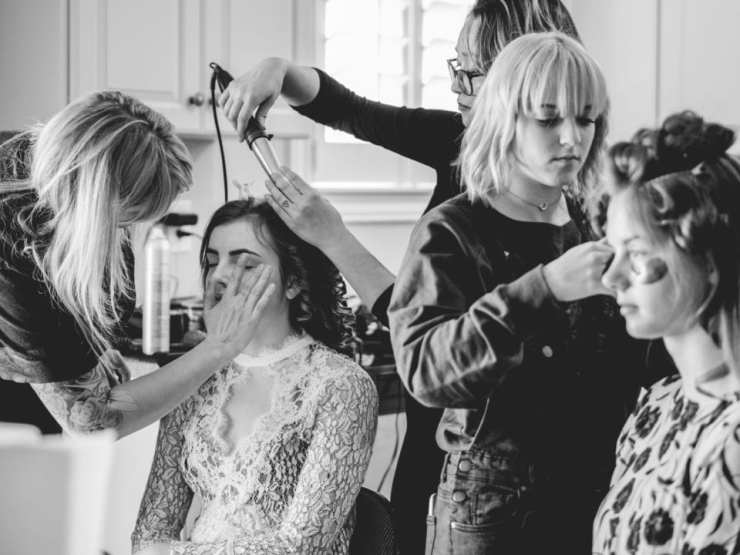If your goal is to shoot beauty portraits, you must understand that not only does the model want to feel flawless, but the hair and makeup artists want their work to look beautiful in the final image as well. You might know a lot of various lighting setups but when it comes to beauty, the main goal is to avoid creating unflattering lighting that either expose the subject’s uneven skin and hair texture (acne problems, fine line or wrinkles, coarse or damaged hair) or visually age them.
For that reason, your choice of light modifiers and main light placement must be well thought through. A light modifier in studio photography is anything you attach to your flash or light source to control the light pattern it produces. These include umbrellas, softboxes and reflectors.
When choosing my light modifier I will always think about how big the area is that I need to light. For full body or group shots, I like to use a softbox. But for close individual portrait shots, I use my favorite and most often used light modifier, which is the beauty dish.
Light modifiers
The beauty dish is a big reflector bowl. The point of a beauty dish is to produce a softer light in the form of a directed beam of light. However, the beauty dish light is always just a tiny bit hard and can sometimes accentuate problematic skin. In that case, I like to throw on the diffuser to soften it up.
In this image, I used a beauty dish as my key light source modifier. My silver reflector was in front of the model, about chest level to fill in the shadows under her nose and chin. This model herself is a master aesthetician, so the texture of her face was flawless. I knew I had to keep that texture and the beauty dish allowed me to do just that.
Softboxes come in three different styles: Square, rectangular and octagon. There are many different size options within those shapes.
Softboxes create a gradual transition from light to dark and there are no hard edges. They create this effect because the light is scattered and hits your client from so many different angles.
For this image, I used a large softbox as my key light. In this photoshoot, the “hero” was the hair and hair colors, so I chose to go with a softbox to capture that and avoid creating more retouching problems if any of the models didn’t have nice even skin.
Always remember — the more problematic or aged your subject’s skin is, the softer the light you should use. A large softbox and a diffused light-filled in the shadows and flaws for this shoot.
Light placement
I am obsessed with clamshell lighting! I use it every time I am shooting beauty images. You can read more about this lighting setup and why I love it HERE.
That being said, side lighting will emphasize uneven skin texture which is what we want to avoid in beauty photography. So make sure your light isn’t just soft, but that it’s also placed correctly.
Lens choice
When you are shooting beauty, you typically don’t need to include much of the surroundings into the frame. The main focus of your image is the model’s face. I shoot beauty with a 50mm, 85mm or a 105mm Macro.
Some people say that there is distortion when shooting portraits with anything wider than 70mm. To be honest, I don’t notice and I am not sure most clients do either, but it is something to be aware of as you find your personal preference. I do recommend that the more amount of space you want the face to take up, the longer the focal length you want to use. If you are going for a super tight close-up and detail-orientated shot, the macro lens is a must.
I’ll fix it later
I really don’t like that statement and I don’t like when people use it. All you have to do is be observant during your photoshoot. It’s the best thing you can do for your post-processing. Even if you are a Photoshop ninja, like Kristina Sherk and can do wonders with your retouching skills, you will save yourself a ton of time by fixing the model’s flyaway hairs, smeared makeup, twisted shoulder straps, etc. before you push that button.
If you can get your makeup artist or hairstylist to stick around for the shoot — even better! They see and fix things that you would never notice. I always tell my team to just stay right outside the frame and to jump in at any point they see something that needs to be fixed.
Plus, if someone else is going to be retouching your images, you will be doing them a massive favor by saving them time. Getting things right in-camera can also save your client money.
Models & heroes
Casting is one of the most important things in beauty photography. The key is to select not only beautiful faces but also picking a model who fits the concept.
Matthew Jordan Smith once told me that every shot should have a “hero.” If you are shooting a portfolio for a makeup artist the model’s skin has to be the “hero” and it has to be flawless. Selecting a model whose skin is far from ideal for a makeup shoot isn’t the best idea. Likewise, the model for a hair campaign needs to have “hero” hair. The worst thing you can do for the shoot and your retouching is select a model who doesn’t have the “hero” you need.
Final advice
If you plan to shoot a specific type of beauty editorial makeup, cosmetics/jewelry ads or hairstyling images, do your research! Pinterest is a great platform for doing that.
Pay attention to the lighting and framing in the type of photography you are interested in and study it. Study the catchlights in those images as it will help you figure out what light modifiers they used and where they placed them. You will find that each of these beauty photography types has a specific set of common things that you can try yourself and have FUN, go wild and try it all! Find your style.
Tell your story with the second annual Visual Storytelling Conference!
Experience four days of interactive, online training sessions featuring a range of educational content with experienced photographers and content creators. This free event kicks off with a series of technical boot camps to build essential skills, followed by live, online sessions on photography, video, business and social media. Join live from March 10-13, 2022!


